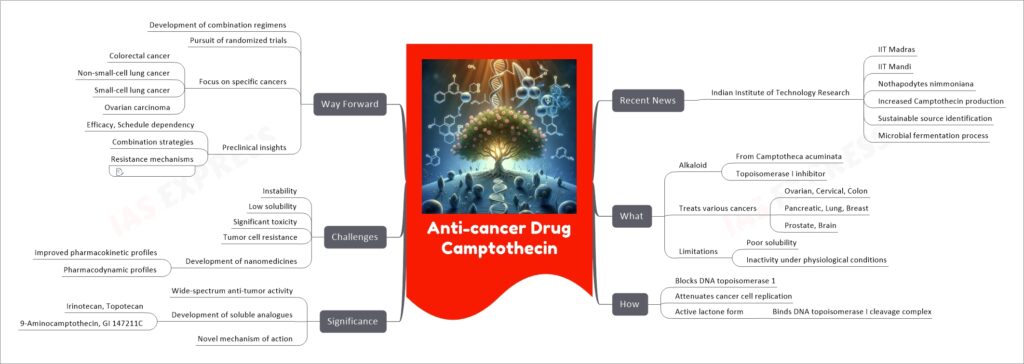Anti-cancer Drug Camptothecin

Camptothecin is a potent anti-cancer drug derived from the Chinese tree, Camptotheca acuminata. It functions as a topoisomerase I inhibitor, blocking the enzyme crucial for DNA replication in cancer cells. This drug has shown effectiveness against various cancers, including ovarian, cervical, colon, and lung cancers. However, its clinical use has been limited due to issues like poor solubility and toxicity. Recent developments, particularly in India, include the enhanced production of camptothecin through metabolic engineering and the identification of sustainable sources, addressing some of these challenges. Researchers have also developed more soluble and less toxic analogues like irinotecan and topotecan. The future of camptothecin involves developing combination therapies, conducting more clinical trials, and improving its pharmacokinetic and pharmacodynamic profiles, particularly through nanomedicine.

